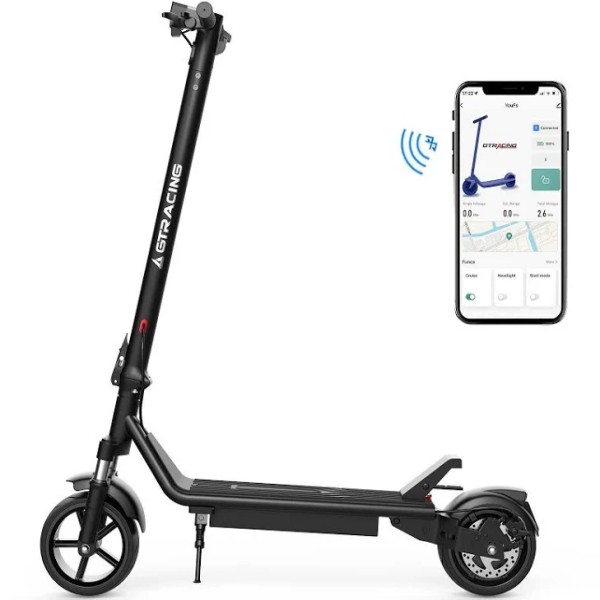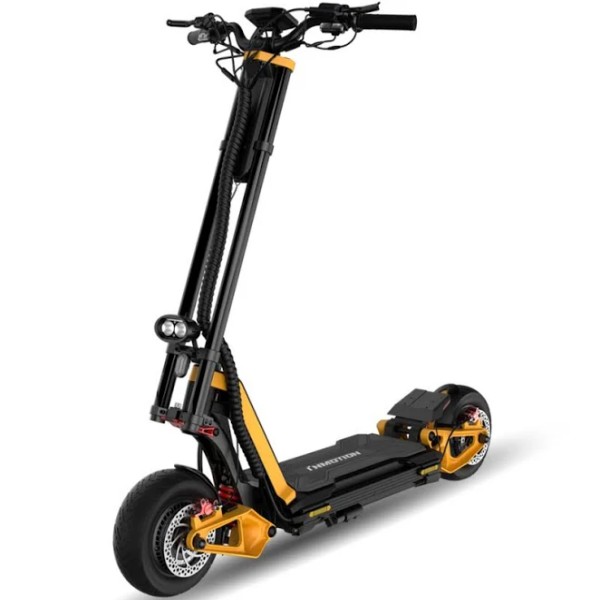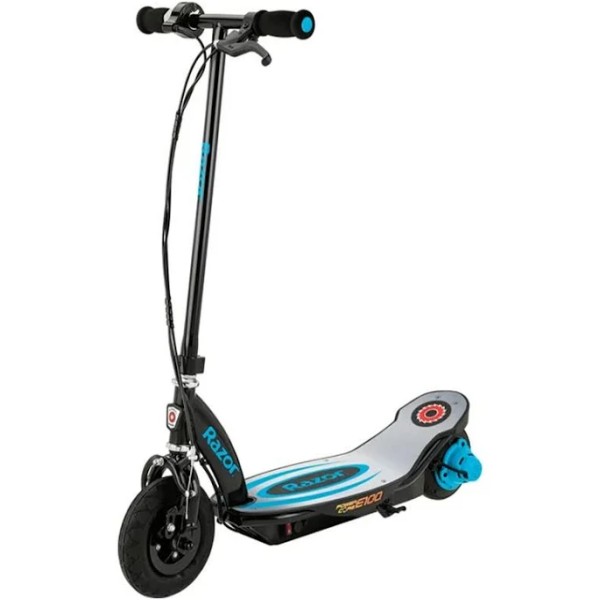Scooters offer a fun and efficient way to navigate urban environments, but what happens when your scooter fails to start? In many conventional scooters, riders rely on a kickstart mechanism to ignite the engine. However, if you’re accustomed to automatic starters or electric scooters, you might find yourself in a situation where a kickstart is simply not feasible. Thus, understanding how to start a scooter without kickstart becomes essential. This guide will explore multiple methods for starting a scooter, along with troubleshooting techniques to pinpoint underlying problems, the importance of maintenance, and practical tips to enhance your starting techniques. By the end of this article, you’ll be equipped with the knowledge you need to get your scooter up and running safely and efficiently.
Understanding Scooter Starting Mechanisms
Before diving into how to start a scooter without kickstart, it’s crucial to understand the different kinds of starting mechanisms that scooters typically employ.
1. Kickstart Mechanism
- History and Functionality: Traditionally, scooters came equipped with kickstart mechanisms allowing riders to manually start the engine by applying a kick to the start lever. This mechanical process generates sufficient power to ignite the engine.
- Drawbacks: If this mechanism fails due to mechanical issues or if you lack the strength to kickstart, it can complicate your ability to ride.
2. Electric Start
- Modern Convenience: Many modern scooters utilize electric start systems, which allow the engine to be started at the push of a button.
- Battery Dependency: This mechanism relies on battery power; therefore, if your battery is low or dead, the scooter won’t start, necessitating alternative starting methods.
3. Automatic vs. Manual Transmission
- Transmissions Impact Starting Techniques: Scooters with automatic transmissions utilize a pulley and belt system, while manuals may require the rider to engage the clutch and shift gears appropriately.
- Starting Methods Based on Transmission: Depending on which type your scooter has, the approach to starting without a kickstart can differ.
How to Start a Scooter Without Kickstart
Now, let’s explore various methods to start your scooter without the kickstart option available.
1. Using Electric Start
If your scooter has an electric starter, here’s how you can start it:
- Turn the Ignition Key: Insert the key and turn it to the “on” position.
- Check the Neutral Gear: Ensure the scooter is in neutral by inspecting the gear indicator; a green light typically means you’re in neutral.
- Engage the Electric Start: Press the start button while holding the brake lever to initiate the starting sequence.
- Monitor Battery Level: If the engine doesn’t turn over, check to ensure the battery is charged and functioning.
2. Push Start Method
In cases where your scooter battery is dead but the engine is still operational, you can use the push start technique.
- Find Assistance: It’s often best to have a friend help you with this method, especially on inclines or slopes.
- Position the Scooter: Place the scooter on an incline or have someone push it while you are seated.
- Turn the Ignition On: Ensure the ignition is switched on as you prepare to start.
- Release the Clutch: If your scooter has a manual transmission, squeeze the clutch lever, push the scooter, and then release the clutch while in gear to kick off the engine.
- Reengage the Clutch: After the engine fires, re-engage the clutch immediately while you increase throttle to keep the scooter running.
3. Jump Starting with Another Scooter or Vehicle
If your scooter battery is too drained, consider jump-starting it using another battery-equipped scooter or car.
- Gather Equipment: You’ll need jumper cables and access to another vehicle with a compatible battery.
- Connect Cables: Attach the positive (red) lead to the positive terminals of both batteries, and do the same with the negative (black) lead to the batteries.
- Starting Sequence: Start the donor vehicle or scooter. After a few minutes, turn the ignition on your scooter and press the start button.
- Disconnect Safely: Once your scooter starts, carefully disconnect the cables in reverse order to avoid any sparks.
Troubleshooting Common Starting Issues
Understanding how to identify common issues can save you time and prevent frustration when trying to start your scooter.
1. Check Fuel Levels
- Starvation of Fuel: If the scooter won’t start, first check whether there’s enough fuel in the tank.
- Fuel Quality: Poor-quality fuel can also lead to starting issues, so consider draining old fuel and filling up with fresh gas.
2. Inspect the Battery
- Testing Battery Voltage: Use a multimeter to check the battery’s voltage. If it reads below 12.6 volts, consider charging or replacing the battery.
- Corrosion and Connections: Inspect battery terminals for corrosion or loose connections that might hinder starting.
3. Examine the Fuses
- Electrical Issues: If all else seems well but the scooter still won’t start, inspect the fuses for any blown connections.
- Replace as Needed: If you find a blown fuse, replace it, and try starting the scooter again.
4. Investigate the Starter Motor
- Loose Connections: Check connections to the starter motor for looseness or corrosion.
- Starter Malfunctions: If the starter motor is failing, replacement may be necessary, so consult your manual for proper installation instructions.
Maintenance Tips for Reliable Starting
Regular maintenance practices can enhance your scooter’s reliability, ensuring it starts smoothly every time.
1. Routine Inspection
- Regular Checks: Frequently inspect various components like oil levels, battery condition, and wiring to catch potential issues early.
- Performance Enhancements: Address any inconsistencies, as these may influence starting capability over time.
2. Clean the Fuel System
- Fuel Filters and Carbs: Regularly clean your fuel lines and carburetors to avoid blockages that could prevent starting.
- Add Fuel Stabilizers: When leaving the scooter unused for an extended period, use fuel stabilizers to maintain fuel quality.
3. Battery Care
- Keep Your Battery Charged: Use a battery maintainer or trickle charger during the offseason to keep the battery in good condition.
- Regular Cleaning: Clean terminals and connections to avoid corrosion buildup.
4. Scheduled Servicing
- Professional Help: Consider having your scooter serviced regularly to ensure all systems, especially electrical components, are functioning correctly.
- Documentation: Keep a log of regular combined checks and provided services for reference.
Safety Precautions When Starting Your Scooter
When starting your scooter, it’s crucial to implement safety precautions.
1. Protective Gear
- Wear a Helmet: Helmets provide critical protection in case of accidents and should be worn at all times while operating your scooter.
- Additional Gear: Consider wearing gloves, jackets, and appropriate footwear to protect your body from injury while riding.
2. Adequate Space
- Clear Area: Make sure your riding area is clear of obstacles before starting your scooter.
- No Passengers: Avoid attempting to start the scooter with additional passengers or weight, as this could interfere with balance and safety.
3. Follow Manufacturer Guidelines
- Consulting the Manual: Always refer to the manufacturer’s guidelines for starting and operating your specific scooter model.
- Compliance with Local Laws: Ensure that you follow all local regulations regarding helmets, registration, and usage to avoid legal issues.

Conclusion
Knowing how to start a scooter without kickstart is crucial, particularly for riders of traditional models or those experiencing technical difficulties. By understanding various starting methods—including electric starts, push starts, jump-starting techniques, and troubleshooting common issues—you’ll arm yourself with essential knowledge that can save time and reduce frustration on the road.
Additionally, keeping your scooter properly maintained and following safety precautions will enhance your riding experience and keep you safe. Whether a seasoned rider or a newcomer to the scooter community, mastering these skills ensures you remain mobile, prepared, and confident wherever your journeys take you.
With this comprehensive guide, you are now equipped to face any challenges associated with starting your scooter effectively. Embrace the joy of riding, and always prioritize safety during your adventures!